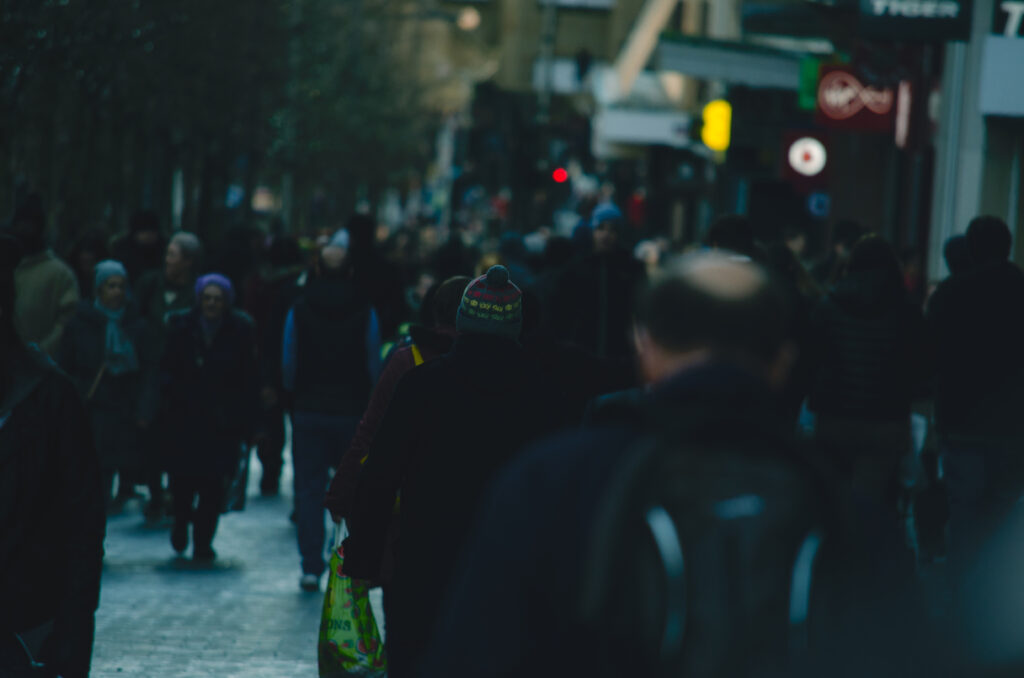The answer is simple.
Yes.
The American Prison and Justice System
To understand the importance of rehabilitation and re-entry programs, we must first take a glance at the current state of the American prison and justice system.
Over 70 million Americans have some sort of criminal record, with about 2 million behind bars at any time. This system is overwhelmed and lacks the needed services to give those who have been previously incarcerated a chance to succeed in the outside world, leading to a +75% return rate to prison within five years of release.
According to the U.S. Department of Justice, the original purpose of the Federal Bureau of Prisons (which was established in 1930 to administer the prison system) is “to protect society by confining offenders” while providing “work and self-improvement opportunities” to aid people who are incarcerated in preparing for re-entry.
However, in the nearly 100 years since the BOP was established, many policy decisions have been carried out based on the notion that “criminals” can’t be helped—which in turn strengthens that notion. The following are just a few examples of such policies:
- The War on Drugs [first declared in 1971 by President Richard Nixon]: Increased drug-related arrests and mandatory minimum sentencing laws with a new focus on punishment.
- The Sentencing Reform Act of 1984: Established federal sentencing guidelines for judges to follow that emphasized punishment and eliminated parole for federal offenses.
- The Prison Litigation Reform Act of 1996: Made it more difficult for people who have been incarcerated to bring lawsuits against prison officials and limited federal courts’ abilities to intervene in prison conditions.
- The “Tough on Crime” Movement [1980s—2000s]: Implemented harsher laws focused on punishment and led to the “three-strikes” law.
Thus, the system went from encouraging occupational skills development to a prison system that neglected the rehabilitation needs of people who were incarcerated. In the past, such rehabilitation has included court sentences allowing for mandated treatment of mental health issues. Such services are incredibly important for the well-being of people who are incarcerated, as studies have shown that as much as 26% of the prison population has been diagnosed with a mental health condition.
The prison population has also shifted demographically since the War on Drugs took place. In 1982, 58% of the prison population was white and 40% black, with Hispanic/Latino populations not being measured during this time. This number dropped to 48% of the prison population being white in 2008 and increased to 45% black and 19% Hispanic/Latino.
Thus, rather than a place of rehabilitation, the American prison system became a human warehouse whose only goal is punishment and keeping “criminals” off the street.
With inhumane treatment, overcrowding, violence, inadequate medical care, solitary confinement, use of force, and a lack of access to education and rehabilitation, there is a pressing need to address the dignity and humanity of people who are or have been previously incarcerated. Rehabilitation is a necessary part of the prison system; it can and should take place inside a correctional setting and be paired with re-entry programs to follow upon release or parole.
It is because the prison system is failing on these measures that organizations like Homeboy exist.
Recidivism: the tendency of a person to “reoffend.”
Rehabilitation hit a wall when it was decided that nothing works to help those who are incarcerated re-integrate into society. But research has shown that rehabilitation and re-entry programs do address the recidivism rate.
For example, Desistance Knowledge Exchange, a research project in the United Kingdom, has found that an asset-based approach and a focus on building social ties/networks, acknowledging individuals’ identities, and fostering a mutual belief in an individual’s ability to change are a critical part of the re-entry process.
In addition to Homeboy, there are many programs being run by nonprofits and volunteers across the U.S. that provide support to people who are incarcerated, helping them to improve abilities they need to re-enter daily life. Some examples of such activities include working on animal care interactions, high school and college education, and theater classes in prisons.
This “Great Big Story” video, part of their “Human Condition” series, features five facilities with programs breaking the stigma of life in prison.
When you empower people, they learn they can make something of their life without needing to be a criminal.
– Curtis “Wall Street” Carroll | A person incarcerated at San Quentin State Prison
People who have been previously incarcerated need to develop concrete skills in order to provide for themselves and their families through legal means. For many, it is extremely hard to find work. The unemployment rate after incarceration was 27% in 2008, which was five times the rate of the general population at the time.

Education can be key for addressing this issue. The nonprofit Stand Together shows that those who complete some high school courses have recidivism rates around 55%, associate degrees around 13.7%, and bachelor’s degrees around 5.6%. Strikingly, those with master’s degrees have a 0% recidivism rate. Those with an industrial skill or specialized skill have recidivism rates of less than 10%.
Some programs address the underlying reasons that lead to incarceration in the first place. These re-entry programs provide life skills, anger management, financial literacy, Alcoholics Anonymous meetings, treatment for chemical dependency, sex offender treatments, career technical education, cognitive behavioral therapy, employment preparation, substance abuse disorder treatment, violence prevention, sexually transmitted infection prevention, crisis training, and mental health first aid.
These types of programs address the well-being of people who are incarcerated and provide them with a strong foundation for re-entering society, and they have a particularly positive effect for those who have little educational background, who are incarcerated early in their lives, or who have been incarcerated for decades.
Where to Next?

Rehabilitation

Re-entry


